 How do ‘Normal’ phones work?
How do ‘Normal’ phones work?
Traditional telephony networks aka POTS (Plain Old TelephonySystems) are based on a network fabric using TDM (Time DivisionMultiplexing), a technology that’s been around for a longtime.
How does a POTS call work? When a call is established between two phone users, a “virtual circuit” is established between them and a certain amount of bandwidth reserved across that circuit (usually 64Kb/s). That bandwidth is reserved for the lifetime of the call, even if no-one is speaking. As the connection is synchronous, ie. when someone talks, the voice is sent across the network in the sequence that it was said. This occurs until the end of the call.
It’s different with VoIP
With the move to VoIP, voice first gets digitised, turned into small packets, which are then encoded into IP packets, in turn sent across an IP network. The packetisation actually adds overhead (takes longer and adds to the size), leading to VoIP sometimes utilising more network bandwidth than traditional telephony methods. Of course this can be mitigated by using modern CoDecs (the digitisers) which use more compression than traditional telephony. Unfortunately the more compression used, the lower the call quality. In a mobile network, voice is encoded at 13Kb/s (which increases to 20Kb/s+ when packetised – as an example of the overhead). People are used to this reduced quality, despite it being noticeably different from a phone call using a fixed-line.
![]() Using VoIP over the Internet is a hit and miss thing. We know the Internet is fantastic at coping with problems – if there are network errors, the data is re-routed around the black-spots, and when the error goes or traffic gets congested, it just re-routes the data somewhere else. It’s best to think of the Internet as a loose collection of around 30,000+ networks that happen to interconnect at various places.
Using VoIP over the Internet is a hit and miss thing. We know the Internet is fantastic at coping with problems – if there are network errors, the data is re-routed around the black-spots, and when the error goes or traffic gets congested, it just re-routes the data somewhere else. It’s best to think of the Internet as a loose collection of around 30,000+ networks that happen to interconnect at various places.
Where the re-routing works for general Internet traffic, it’s terrible for VoIP as there’s no guarantee that the VoIP data will arrive in an orderly fashion i.e. the first bit of traffic may go one way, then second another and the third another route completely. Each route will have be working at different speeds, so the 3rd piece of VoIP data may actually arrive at the destination first – imagine the third word of the conversation arriving before the first.
Packets arriving in a different order is expected on the Internet and it was designed with this in mind. IP can reassemble the data and put it all back in the right order, but to do so requires large buffers i.e long delays. Unfortunately for VoIP, delay not is something you want as that’s when calls break-up or crack and pop.
In the trade, the packets arriving at different times (relative to a clock signal i.e. like a metronome) is called Jitter.
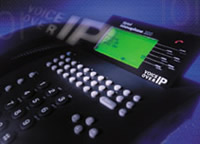 VoIP in an ideal world
VoIP in an ideal world
There are ways to get around this. Such as new technologies like IP/MPLS (IP/Multi Protocol Label Switching) which is a way of ensuring all traffic between two points goes the same way (with back-up routes, in case the primary one fails). It also allows for Quality of Service (QoS) metrics, so VoIP traffic can be prioritised over say Web traffic, minimising Jitter.
Many telecoms companies now run IP networks utilising IP/MPLS, but as they still interconnect over other, public connection points any quality metrics are lost. So as long as all your IP services come from the same supplier, you’re unlikely to be able to maintain QoS.
When does VoIP make sense/when not
VoIP does gives increased flexibility and anyone with a multi-site operation should consider it. If they’re currently paying bills to a telecoms company to transfer calls between sites, the use of VoIP is generally a no brainer, as it give a rapid payback for the added VoIP equipment required.
When to think twice about VoIP
Single site businesses, should be wary. Installing VoIP can consume significant resources when converting from a traditional system in particular using VoIP may require extensive reworking of an internal LAN – you don’t want your phone calls to stop when someone transfers a large file between their PC and the server.
It may be better to look at other options such as Carrier Pre Select (CPS) or Wholesale Line Rental (WLR) or simply another telecom’s provider whose rates are better.
 Security implications and therefore costs are a significant issue. The increase in network traffic that VoIP can bring can have other cost implications, such as ensuring firewalls are “chunky” enough to support the VoIP traffic.
Security implications and therefore costs are a significant issue. The increase in network traffic that VoIP can bring can have other cost implications, such as ensuring firewalls are “chunky” enough to support the VoIP traffic.
One area that isn’t often spoken about, but we feel is a big weakness of VoIP is the potential of all phone calls in and out of the site that are carried over VoIP being lost to a DoS (Denial of Service) attack. Protecting against attacks can be difficult, as the attacks may just look like remote workers trying to establish VoIP calls into the network.
Conclusion
VoIP isn’t a panacea. While it can offer savings and great flexibility, the choice shouldn’t be automatic. Look at the whole picture and work out if there really are savings to be made. If there’s no ROI (Return on Investment), then VoIP is an expensive new toy.
 The expected has happened – Apple have unveiled their new Intel-basedMacs.
The expected has happened – Apple have unveiled their new Intel-basedMacs. Most of the keynote was about the new version on iLife, which you won’t be surprised to hear is called iLife’06. It continues to contain thestandard iTunes, iMovie HD, iDVD and GarageBand, but they’ve all had somemajor reworking.
Most of the keynote was about the new version on iLife, which you won’t be surprised to hear is called iLife’06. It continues to contain thestandard iTunes, iMovie HD, iDVD and GarageBand, but they’ve all had somemajor reworking.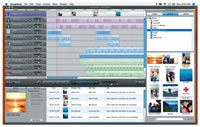 As
As 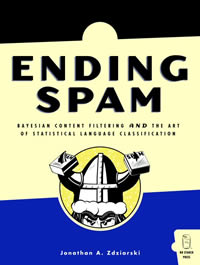 The full title of the book, “Ending Spam: Bayesian Content Filtering and the Art of Statistical Language Classification,” gives you a pretty strong indication that this book is going to provide a depth of information.
The full title of the book, “Ending Spam: Bayesian Content Filtering and the Art of Statistical Language Classification,” gives you a pretty strong indication that this book is going to provide a depth of information. The appendix (Shining Examples of Filtering) explains some of the programs out there, how they work and interviews with the authors.
The appendix (Shining Examples of Filtering) explains some of the programs out there, how they work and interviews with the authors.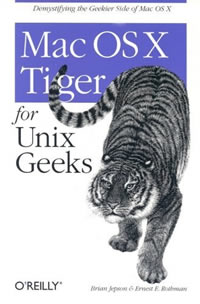 This book covers the Mac OS X 10.4 (aka Tiger) for geeks who have come from a Unix/Linux environment and are happiest using the command line, not sexy GUIs (graphical user environments).
This book covers the Mac OS X 10.4 (aka Tiger) for geeks who have come from a Unix/Linux environment and are happiest using the command line, not sexy GUIs (graphical user environments).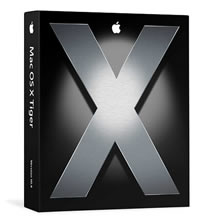 Bits like the section of PearPC might be a bit over the top for even a normal Unix user, but it does work. If you just want to develop Mac OS programs, this could be a way to do it – although it will be slowly as the emulator isn’t very fastest.
Bits like the section of PearPC might be a bit over the top for even a normal Unix user, but it does work. If you just want to develop Mac OS programs, this could be a way to do it – although it will be slowly as the emulator isn’t very fastest. For a long time, Cisco was only focused on high-end corporate sales. This started to change with its acquisition spree. Back In June 2003 it acquired Linksysin order to attack the home and small business markets.
For a long time, Cisco was only focused on high-end corporate sales. This started to change with its acquisition spree. Back In June 2003 it acquired Linksysin order to attack the home and small business markets. DSL is much cheaper to install as it uses existing phone cabling, ratherthan CATV which requires digging up the road, installing fibre tothe street and co-axial cable to the home (this may not be true forgreenfield sites, but in countries with existing infrastructure likethe UK it is).
DSL is much cheaper to install as it uses existing phone cabling, ratherthan CATV which requires digging up the road, installing fibre tothe street and co-axial cable to the home (this may not be true forgreenfield sites, but in countries with existing infrastructure likethe UK it is). Though Cisco have bought Scientific Atlanta, who manufacture the consumerpiece of the puzzle, by expanding the consumer take-up of IPTV they arealso expanding the core network business. Don’t forget, running IPTV servicesrequires a lot of investment in network infrastructure i.e. moreCisco kit.
Though Cisco have bought Scientific Atlanta, who manufacture the consumerpiece of the puzzle, by expanding the consumer take-up of IPTV they arealso expanding the core network business. Don’t forget, running IPTV servicesrequires a lot of investment in network infrastructure i.e. moreCisco kit.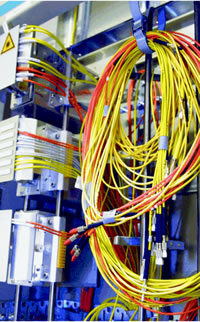 The rollout of ADSL2+ in the UK appears to be going through a reverse-hype process, with people saying it’s not going to deliver high speeds to most people. That may be partially true, but in urban areas where people are within 1.5Km of the exchange they should get 20Mb/s+.
The rollout of ADSL2+ in the UK appears to be going through a reverse-hype process, with people saying it’s not going to deliver high speeds to most people. That may be partially true, but in urban areas where people are within 1.5Km of the exchange they should get 20Mb/s+.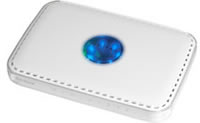 Netgear have released a new wireless access points with claimed speeds of up to 240Mb/s, beating that of wired networks of 100Mb/s (though modern Ethernet wired networks can now go up to 1000Mb/s or 1Gb/s and faster).
Netgear have released a new wireless access points with claimed speeds of up to 240Mb/s, beating that of wired networks of 100Mb/s (though modern Ethernet wired networks can now go up to 1000Mb/s or 1Gb/s and faster).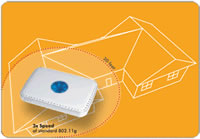 Speed gains using clever encoding
Speed gains using clever encoding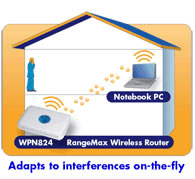 The IEEE (the body that sets the 802.11 standards) are working on the next phase of standards which will incorporate MIMO and other techniques, but they are not due for a while and it will take manufacturers a while longer to then make systems that conform to those new specs. There are no guarantees that any kit now will be upgradeable to those new standards.
The IEEE (the body that sets the 802.11 standards) are working on the next phase of standards which will incorporate MIMO and other techniques, but they are not due for a while and it will take manufacturers a while longer to then make systems that conform to those new specs. There are no guarantees that any kit now will be upgradeable to those new standards. Hash showed off Animation Master which is a very simple (if you believe the demos) animation package. It has a huge library of pre-built characters, objects and even things like types of walks for the characters. Lip syncing even looked easy. Though the package is simple, you probably need some basic creative skills and understanding of animation to do anything sensible with it. Visit their Website and look in the gallery, the video of “I will survive” of Gloria Gaynor fame is a true classic.
Hash showed off Animation Master which is a very simple (if you believe the demos) animation package. It has a huge library of pre-built characters, objects and even things like types of walks for the characters. Lip syncing even looked easy. Though the package is simple, you probably need some basic creative skills and understanding of animation to do anything sensible with it. Visit their Website and look in the gallery, the video of “I will survive” of Gloria Gaynor fame is a true classic. LaCie had lots of disk systems on offer (firewire, USB and Ethernet) offering easy access to multi-terrabytes of data. An external 5 1/4″ drive (the size of a CD-ROM drive) can hold up to 1TB (big disk) while the double width bigger disk extreme can hold up to 2TB. There’s also external RAID drives, the biggest F800 holds up to 2TB supporting Firewire 800 (up to 80MB/s transfers) and the biggest S25 support 160MB/s and up to 2.5GB (which is 3GB internal) both support hot-swappable drives. The newest addition is the mini which looks just like a Mac mini and sits underneath it (and can be stacked with more minis), each one containing up to 250MB of disk.
LaCie had lots of disk systems on offer (firewire, USB and Ethernet) offering easy access to multi-terrabytes of data. An external 5 1/4″ drive (the size of a CD-ROM drive) can hold up to 1TB (big disk) while the double width bigger disk extreme can hold up to 2TB. There’s also external RAID drives, the biggest F800 holds up to 2TB supporting Firewire 800 (up to 80MB/s transfers) and the biggest S25 support 160MB/s and up to 2.5GB (which is 3GB internal) both support hot-swappable drives. The newest addition is the mini which looks just like a Mac mini and sits underneath it (and can be stacked with more minis), each one containing up to 250MB of disk.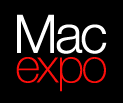 MacExpo has moved to Olympia from the Islington Design Centre and that’s probably the most exciting bit of the show.
MacExpo has moved to Olympia from the Islington Design Centre and that’s probably the most exciting bit of the show. The new G5’s are nice, based on the PCI Express architecture with the ability to put some very high-end NVidia graphics to real work. They now support two CPU’s each with dual cores (i.e. 4 cores) though each core only operates up to 2.5GHz rather than the older two CPU systems that operate up to 2.7GHz (but then, in theory, you’re getting 10GHz compared to a max previously of 3.4GHz – real world tests show more like a 67% speed increase). The new NVidia graphics cards are all capable of driving dual displays – so that’s two 30″ Cinema displays … but you’ll need a new desk.
The new G5’s are nice, based on the PCI Express architecture with the ability to put some very high-end NVidia graphics to real work. They now support two CPU’s each with dual cores (i.e. 4 cores) though each core only operates up to 2.5GHz rather than the older two CPU systems that operate up to 2.7GHz (but then, in theory, you’re getting 10GHz compared to a max previously of 3.4GHz – real world tests show more like a 67% speed increase). The new NVidia graphics cards are all capable of driving dual displays – so that’s two 30″ Cinema displays … but you’ll need a new desk. The new iMacs were there too and they are still the sexiest systems on the market.
The new iMacs were there too and they are still the sexiest systems on the market.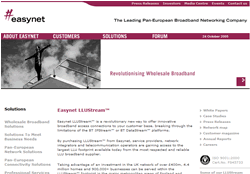 As we reported last week, Easynet has been bought by Sky – as long as they get shareholder approval, but since Sky have offered a premium on Easynet’s shares, this should be a done deal.
As we reported last week, Easynet has been bought by Sky – as long as they get shareholder approval, but since Sky have offered a premium on Easynet’s shares, this should be a done deal. Even though Sky are buying into LLU, Easynet only cover around 250 exchanges and currently all the voice goes to BT (Easynet use the shared metallic path LLU option), while Sky are likely to want to take the phone service as well (they already have a SkyTalk package using CPS provided by THUS). Sky will need to invest to make this a reality as well as increasing Easynet’s coverage. They have said they want to go into around 1000 exchanges, so that’s a build out of around 750 – which won’t be cheap (probably another £100m’ish at least).
Even though Sky are buying into LLU, Easynet only cover around 250 exchanges and currently all the voice goes to BT (Easynet use the shared metallic path LLU option), while Sky are likely to want to take the phone service as well (they already have a SkyTalk package using CPS provided by THUS). Sky will need to invest to make this a reality as well as increasing Easynet’s coverage. They have said they want to go into around 1000 exchanges, so that’s a build out of around 750 – which won’t be cheap (probably another £100m’ish at least). If all the LLU players aggregated infrastructure and competed on services, they could build a 21CN of their own now. LLU competition is going to be fiercely competitive with Wanadoo, AOL, Sky and even Be offering a triple-play – all competing for the same customers. – as well as BT (who will have nationwide coverage) and not ignoring NTL/Telewest who are also going into LLU.
If all the LLU players aggregated infrastructure and competed on services, they could build a 21CN of their own now. LLU competition is going to be fiercely competitive with Wanadoo, AOL, Sky and even Be offering a triple-play – all competing for the same customers. – as well as BT (who will have nationwide coverage) and not ignoring NTL/Telewest who are also going into LLU.